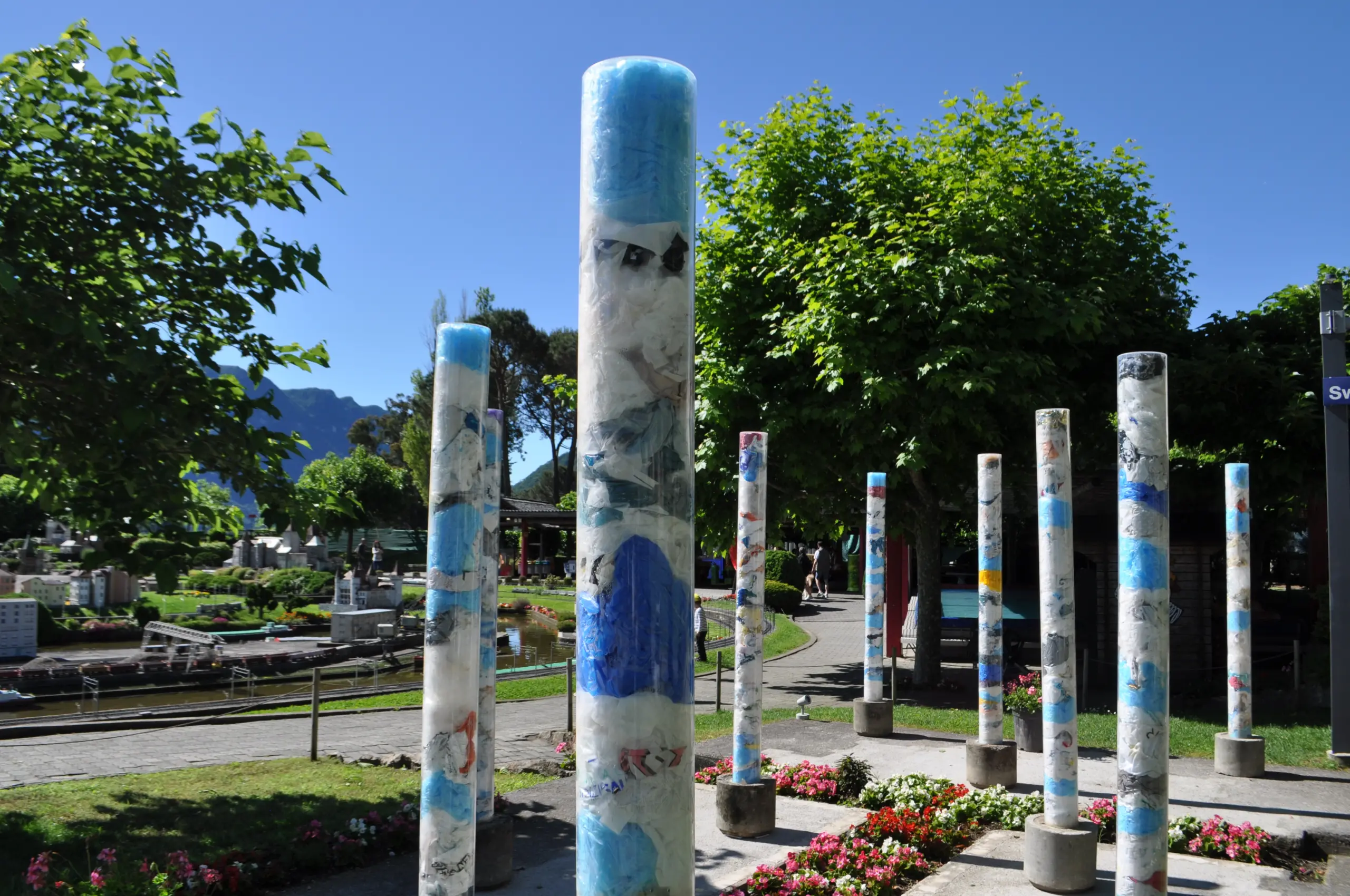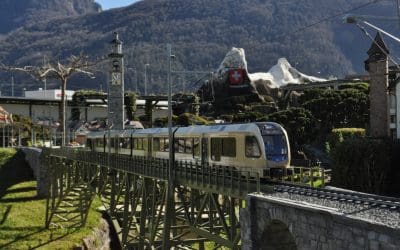To mark the park’s 65th anniversary, Swissminiatur is opening a new thematic area dedicated to art and culture. Starting today, the 3rd of June 2024, you can admire the installation “Un sacchetto, per favore?” (“A Bag, Please?”) by local artist Marisa Casellini, created in 2015 and dedicated to the memories of her sister Gabriella Bernasconi Walker.

The words of the artist, Marisa Casellini
The installation interprets a true story experienced by my sister Gabriella Bernasconi Walker (1952-2015) during one of her missions in Africa.
The story tells of an African child who every morning must walk for forty minutes and back to fetch water. As a container he uses a plastic bag that we throw away, polluting.
Recycling bags with sculptures highlights human drama in every sense: pollution, poverty, joys for a very few and tragedies for others, including violence of all kinds, wars and destruction.
For the sixty-fifth anniversary of Swissminiatur, the concept of the work “Un sacchetto, per favore?” was followed up by giving concrete space to the installation.
The work is meant to be a sensitive and conscious sign by Swissminiatur for a universal look at the enormous problems of the Planet.
Un sacchetto, per favore? (One bag, please?)
In an African country, a boy possesses a plastic bag, similar to those from Migros or Coop, but scrambled. Its transparency has become opaque and full of stripes, becoming what to us is an ugly, old plastic bag. Ours are new, white, yellow, every day another.
In the evening the boy carefully hangs the bag on a line to dry. He carefully franks it because once broken, the bag would no longer be needed. One small hole and it would need to be replaced. Around there, it is not easy to find more plastic bags. Those who have one keep it. It happens that you can buy bargain ones, even at a good price, but not often. Passersby have some, but their arrival is rare. For every foreigner, the applicants are numerous. Every morning with that bag the boy walks 40 minutes from his home to the nearest water point. He stands in line and waits patiently for his turn. After washing himself on the spot, and fiddling with the other boys, he fills his bag with water. The boy is used to it; he knows perfectly well how much water can fit into his fragile container.
The boy resumes his journey with the others who, like him, go from the village to the water source every morning. He carries his load with great care and, once he arrives home, with tested dexterity, hangs the water-filled bag on the wall. Everyone will serve themselves with customary sparing. Every day, in this way, it is ensured that the improvised tank that represents daily consumption for him and his family is replenished.
What about the school? He is not always in charge of the water. Tomorrow it will be the sister’s turn. Today she is in school, tomorrow he will go to class. They take turns, one day water, one day school. Other guys have more substantial containers, with stoppers. They can walk faster. Sometimes they manage to take care of the morning water supply before classes start. The boy in this story cannot and so he goes every other day.



